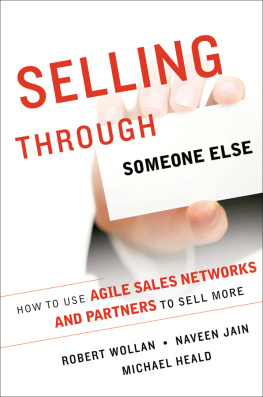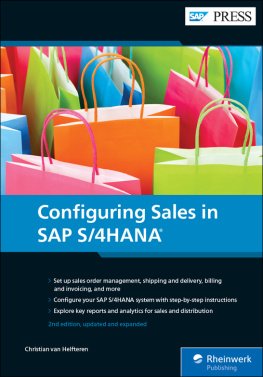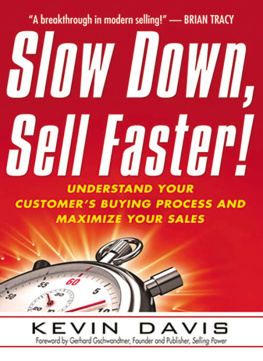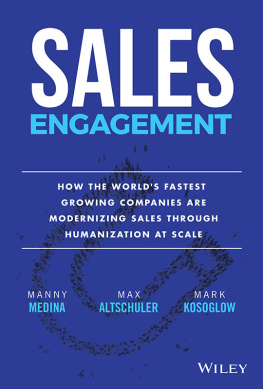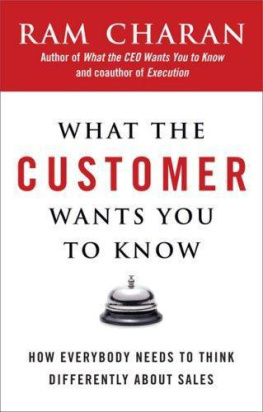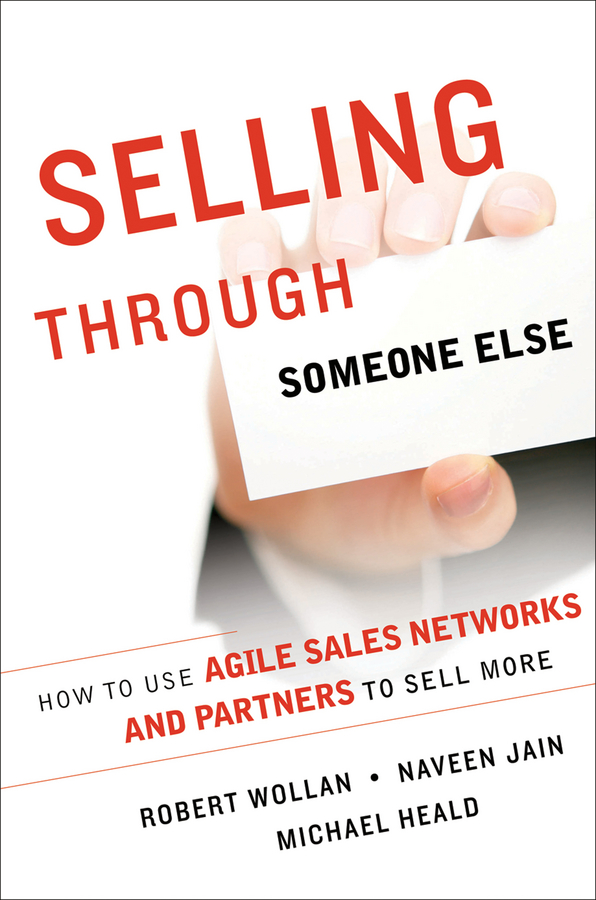
Cover image: Business Card in Hand Oleg Prikhodko/istockphoto
Cover design: C. Wallace
Copyright 2013 by Accenture Global Services Limited. All rights reserved.
Published by John Wiley & Sons, Inc., Hoboken, New Jersey.
Published simultaneously in Canada.
This book makes reference to trademarks that may be owned by others. The use of such trademarks herein is not an assertion of ownership of such trademarks by Accenture or the authors and is not intended to represent or imply the existence of an association between Accenture or the authors and the lawful owners of such trademarks. No sponsorship, endorsement, or approval of this book or its contents by the owners of such trademarks is intended, expressed, or implied by the references to such trademarks.
No part of this publication may be reproduced, stored in a retrieval system, or transmitted in any form or by any means, electronic, mechanical, photocopying, recording, scanning, or otherwise, except as permitted under Section 107 or 108 of the 1976 United States Copyright Act, without either the prior written permission of the Publisher, or authorization through payment of the appropriate per-copy fee to the Copyright Clearance Center, 222 Rosewood Drive, Danvers, MA 01923, (978) 750-8400, fax (978) 646-8600, or on the web at www.copyright.com. Requests to the Publisher for permission should be addressed to the Permissions Department, John Wiley & Sons, Inc., 111 River Street, Hoboken, NJ 07030, (201) 748-6011, fax (201) 748-6008, or online at www.wiley.com/go/permissions.
Limit of Liability/Disclaimer of Warranty: While the publisher and author have used their best efforts in preparing this book, they make no representations or warranties with the respect to the accuracy or completeness of the contents of this book and specifically disclaim any implied warranties of merchantability or fitness for a particular purpose. No warranty may be created or extended by sales representatives or written sales materials. The advice and strategies contained herein may not be suitable for your situation. You should consult with a professional where appropriate. Neither the publisher nor the author shall be liable for damages arising herefrom.
For general information about our other products and services, please contact our Customer Care Department within the United States at (800) 762-2974, outside the United States at (317) 572-3993 or fax (317) 572-4002.
Wiley publishes in a variety of print and electronic formats and by print-on-demand. Some material included with standard print versions of this book may not be included in e-books or in print-on-demand. If this book refers to media such as a CD or DVD that is not included in the version you purchased, you may download this material at http://booksupport.wiley.com. For more information about Wiley products, visit www.wiley.com.
ISBN 978-1-118-49638-1 (cloth); ISBN 978-1-118-52622-4 (ebk);
ISBN 978-1-118-52630-9 (ebk); ISBN 978-1-118-52652-1 (ebk)
Preface
As Accenture has worked to help organizations of various shapes, sizes, and industries improve their growth and operational performance, one tenet has become abundantly clear to us: The selling (getting it sold) and service (keeping it sold) agenda for most companies is increasingly complex and, as such, delivering growth is a massive challenge for virtually every organizationlarge and small, in all regions of the world.
With sales models that have experienced, at best, incremental change in the past several decades (despite sweeping changes in technology and customer behaviors) it is not hard to imagine why companies can't keep up. Yet there are organizations that are succeeding in navigating their way through the complex web of vendors, competitors, service providers, distributors, resellers, and customers that play a part in their ultimate growth. Many of these organizations share a common trait: They have adapted their sales models with the times. They have embraced what we call Agile Selling models that are based, at least in part, on selling through someone elsethat is, a broader mix of intermediaries, other channel partners, and even customers that extend companies' reach and growth. Agile Selling is the model of choice among the leaders in industries that have the most complex distribution channels and that thrive even with a highly independent partner network. Other companies have much to learn from these leaders' experiences.
In studying and working with companies around the world, we've identified the layers of baggage built up in sales operations that would become obvious, and could be corrected, if each step in the process acted as if they had to earn the right to serve their downstream business partner. Think about it: If you didn't own your sales force, how much more important would it be to optimize every step of your incentive compensation, your lead generation, your pricing, or your talent management? If every function and person in your organization had to justifyand continually improvetheir performance in order to keep providing their services to you, how might that affect the performance of your overall sales organization? The path to selling through someone else is not a general theory; rather, it's a model based on the best practicesand the deepest, richest capabilitiesgleaned from the companies that deal with the greatest market and channel complexity, face ongoing and heightened market volatility, and often operate with the tightest margins: those that sell through someone else.
The time is rightand the need is imminentto realign, redefine, and refocus the selling model and fundamentally transform the principles that guide it. That's why we've written this book.
This book is different from most selling theory or methodology books you see cluttering bookshelves. It's based on our collective experience working with companies all over the world to dramatically transform their selling model, and it gets very specific about which elements of the sales model need updating and which specific areas you can change to infuse new growth and profitability. The book also brings in guidance from numerous other Accenture professionals with deep knowledge and experience in each of the underlying capabilities required to support the new Agile Selling model. And it shares the specific experiences of leading companies that have transformed the way they sell and the way they support their selling ecosystem.
In the opening section of the book, we explore why companies must embrace the elements of an Agile Selling model that makes greater use of sales resources not employed or owned by the sales function. We also describe what the Agile Selling model looks like in practice. From there we look at the experiences of companies in four industries that already rely heavily on the Agile Selling modelconsumer goods manufacturing, electronics and high-tech, pharmaceuticals, and insuranceand highlight what other firms can learn from leaders in those industries.
We then dig more deeply in Section II into the core capabilities companies need within their organization to bring the Agile Selling model to lifeincluding lead generation, incentives, pricing, and analytics. In Section III, we turn to what it takes to build a better network that extends far outside the walls of the organization and capitalizes on new market opportunities. Section IV explores the core infrastructure needed to sustain the relationships with customers, channel partners, and other entities that are critical to Agile Selling. Then, in the final section of our book, we devote our attention to the dimension that's arguably most critical to the success of the Agile Selling model: people.
Next page
